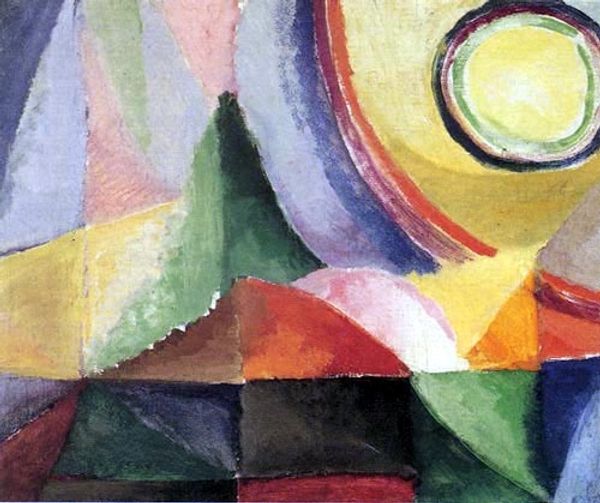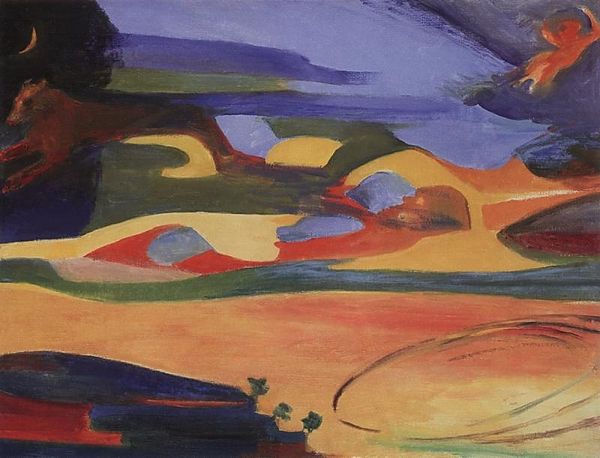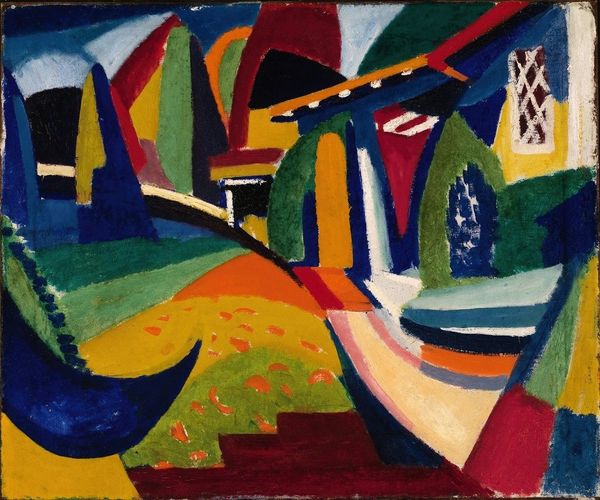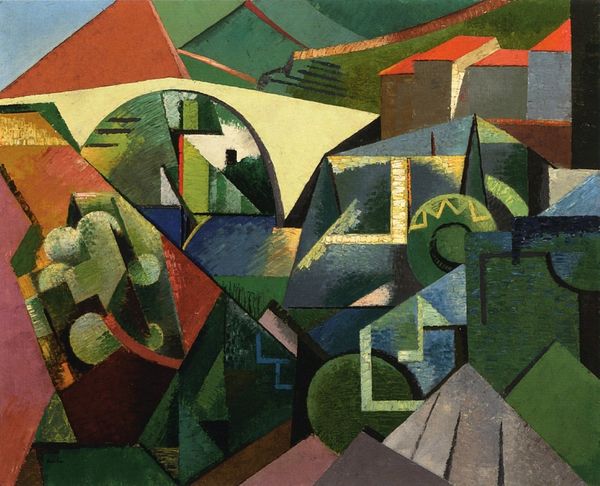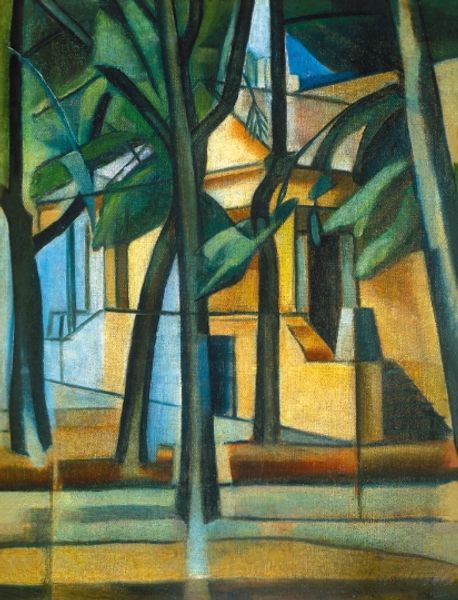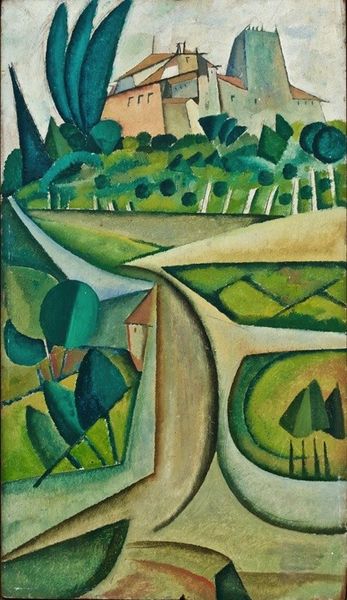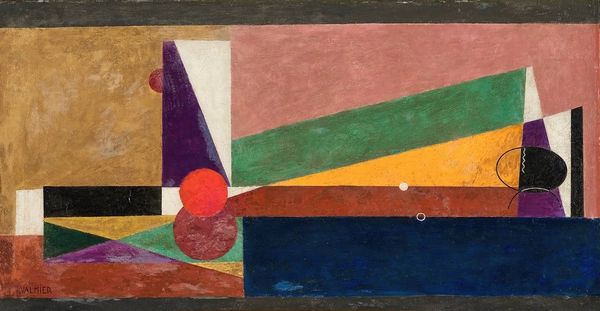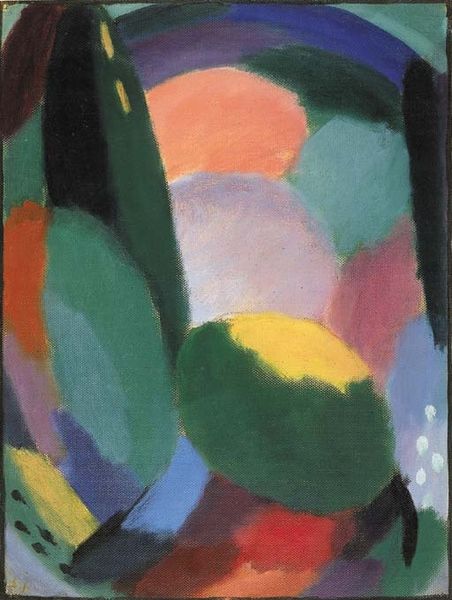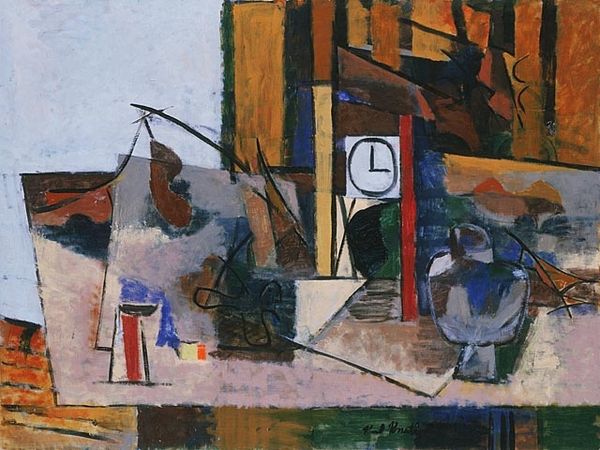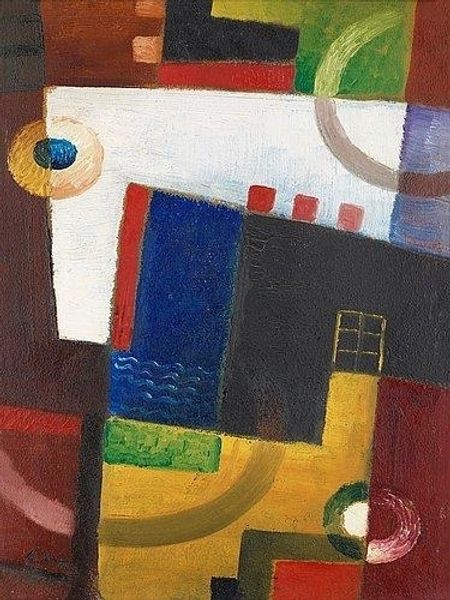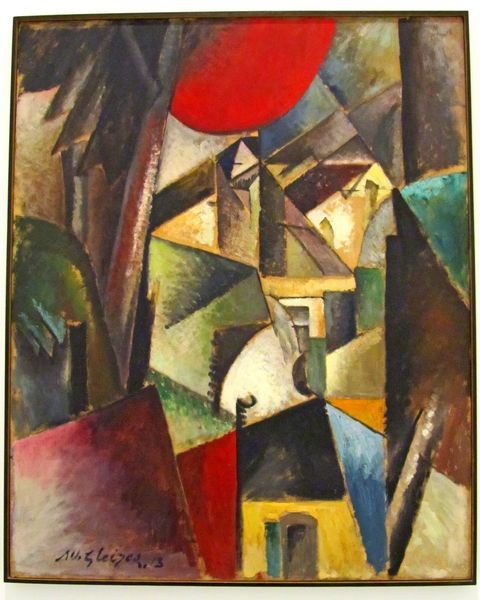
painting, oil-paint
#
cubism
#
painting
#
oil-paint
#
landscape
#
oil painting
#
geometric
#
cityscape
Copyright: Public domain
Curator: Immediately striking is this playful abstraction of a landscape, perhaps even a cityscape. I sense a geometric re-imagining of natural forms. Editor: And it's certainly a vibrant one! What we're looking at is an untitled landscape with a bridge rendered by Morton Schamberg, executed with oil paint in a distinctly Cubist style. Given Schamberg's focus on industrial subjects, I wonder what led him toward the pastoral. Curator: Intriguing! I'm immediately drawn to the structure. The composition is fragmented, yet the planes of color fit together so deliberately. There’s a palpable tension between representation and abstraction; notice how the lines, angles, and facets evoke the subject of bridges, land and structures without precisely describing it. It engages in a pure visual exercise of pictorial space. Editor: Schamberg seems to pull from the Parisian avant-garde and import it into an American context. During the early 20th century, industrialization was rapidly transforming the American landscape. I wonder if this "landscape with a bridge" points toward urban development? Notice the distinct lack of human presence... perhaps reflecting a certain anxiety around the machine age and what it does to the relationship between people and places. Curator: Yes! Precisely, look at the deliberate absence of realistic texture and the presence of very defined shapes of similar size. This speaks to the importance of geometry in conveying depth. Schamberg wants to push the limits of representation. Editor: While I admire Schamberg's formal experimentations, the real appeal lies in his ability to encapsulate these pressing issues around modernity and human connection with technology. Ultimately, he challenges the viewer to contend with what it meant to be an American in a society deeply impacted by industrialism and the looming shadows of modernity. Curator: I concede. The conversation here between formal vocabulary and a sociopolitical climate adds layers of intrigue! It's the relationship that grants the work so much vibrancy. Editor: Indeed, viewing Schamberg’s landscape through both a visual and historical perspective, a deeper understanding is granted on the artistic explorations and societal challenges present at the beginning of the modern era.
Comments
No comments
Be the first to comment and join the conversation on the ultimate creative platform.
